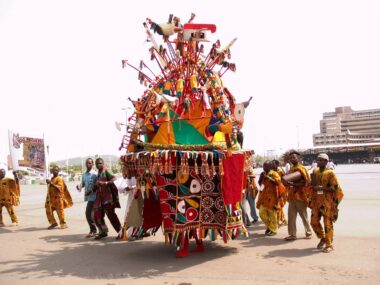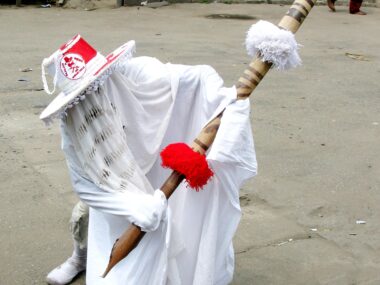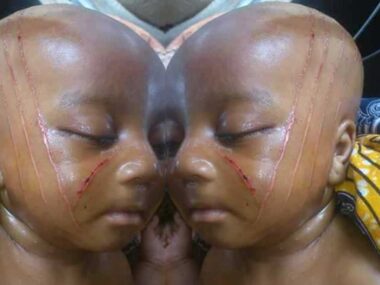Piercings have held profound significance in indigenous cultures worldwide, serving as potent symbols of spirituality, social identification, and ritualistic practices. Throughout various indigenous societies, piercings carry multifaceted meanings deeply rooted in custom, perception methods, and neighbourhood values.
This essay embarks on a journey to discover the wealthy symbolism of piercings in indigenous cultures, delving into their religious, social, and ritualistic dimensions.
Religious Significance
In indigenous cultures, piercings usually maintain religious significance, serving as conduits for connecting with the divine, ancestors, and the spirit world. Piercings are believed to open channels of communication between the bodily and metaphysical realms, permitting people to obtain blessings, safety, and steering from ancestral spirits or deities.
For instance, amongst certain Indigenous American tribes, nostril piercings had been thought to boost one’s sense of odour, enabling people to detect the presence of spirits or hazards in their environment. Equally, in Indigenous Australian cultures, lip piercings had been believed to facilitate the passage of ancestral spirits into the physique, fostering a deeper connection to the land and ancestral heritage.
Social Identification and Group Affiliation

Piercings additionally play an important function in defining social identification and group affiliation inside indigenous communities. Several types of piercings, placements, and adornments might signify one’s age, gender, standing, or tribal affiliation, serving as visible markers of cultural belonging and social hierarchy.
As an example, among the many Maasai folks of East Africa, earlobe stretching and elaborate ear piercings are symbols of cultural identification and rank inside the intended neighbourhood. Equally, among the many Hmong folks of Southeast Asia, facial piercings and tattooing are markers of ethnic identification and lineage, distinguishing them from different tribal teams.
Ritualistic Practices and Life Transitions
Piercings are sometimes intertwined with ritualistic practices that mark important life transitions, rites of passage, or ceremonial occasions inside indigenous cultures. From puberty rites to initiation ceremonies, piercings are included in rituals that signify coming-of-age, marriage, warriorhood, or religious awakening.
For instance, among the many Sepik River tribes of Papua New Guinea, younger males endure elaborate scarification and piercing rituals as a part of their initiation into manhood, symbolizing power, braveness, and ancestral blessings. Equally, among the many Indigenous peoples of the Pacific Northwest Coast, facial piercings and adornments are worn throughout potlatch ceremonies to represent wealth, standing, and ancestral connections.
Connection to the Pure World
In lots of indigenous cultures, piercings are imbued with symbolism that displays the interconnectedness between people and the pure world. Piercings might incorporate supplies sourced from nature, resembling feathers, shells, bones, or stones, symbolizing a deep reverence for the earth, animals, and parts.
Among the many Indigenous peoples of the Amazon rainforest, for example, lip piercings adorned with animal teeth or feathers are worn as symbols of safety, power, and concord with nature. Equally, among the many Inuit of the Arctic area, labret piercings made out of walrus ivory or bone are believed to evoke the spirit of the ocean and guarantee a bountiful harvest.
Therapeutic and Safety
In indigenous cultures, piercings are sometimes related to therapeutic and protecting properties, believed to safeguard people from sickness, hurt, or malevolent forces. Sure piercings could also be carried out as a part of therapeutic rituals or shamanic practices to revive stability, concord, and religious well-being.
For instance, among the many Quechua folks of the Andes, nostril piercings adorned with medicinal herbs or stones are worn for his or her therapeutic properties, believed to alleviate respiratory illnesses and thrust back evil spirits. Equally, among the many Ainu of Japan, earlobe piercings with bear claws or teeth are worn as talismans for defence and luck.
Conclusion
In indigenous cultures around the globe, piercings function as potent symbols of spirituality, social identification, and ritualistic practices, reflecting the profound connections between people, nature, and the divine. By way of their intricate symbolism, piercings convey a wealth of cultural meanings deeply rooted in custom, perception methods, and neighbourhood values.
By exploring the religious, social, and ritualistic dimensions of piercings in indigenous cultures, we acquire a deeper appreciation for his or her significance and enduring relevance in shaping cultural identification, social cohesion, and religious well-being inside indigenous communities.










